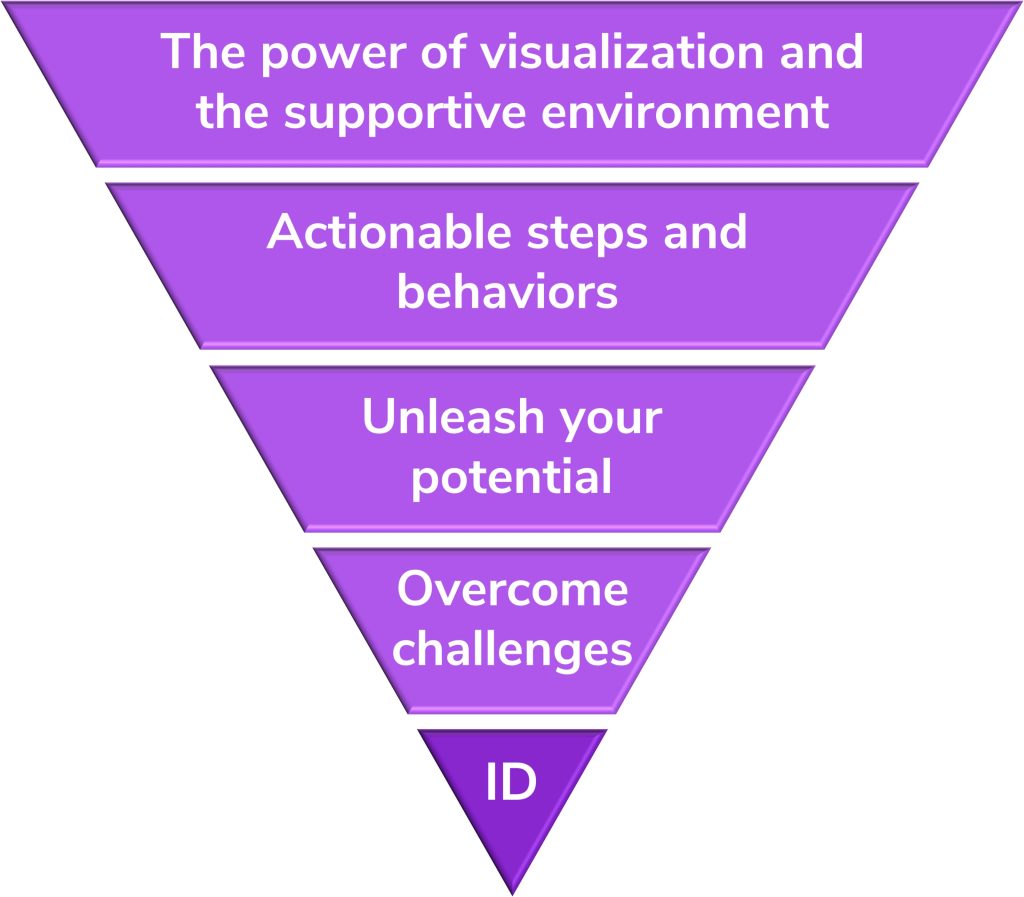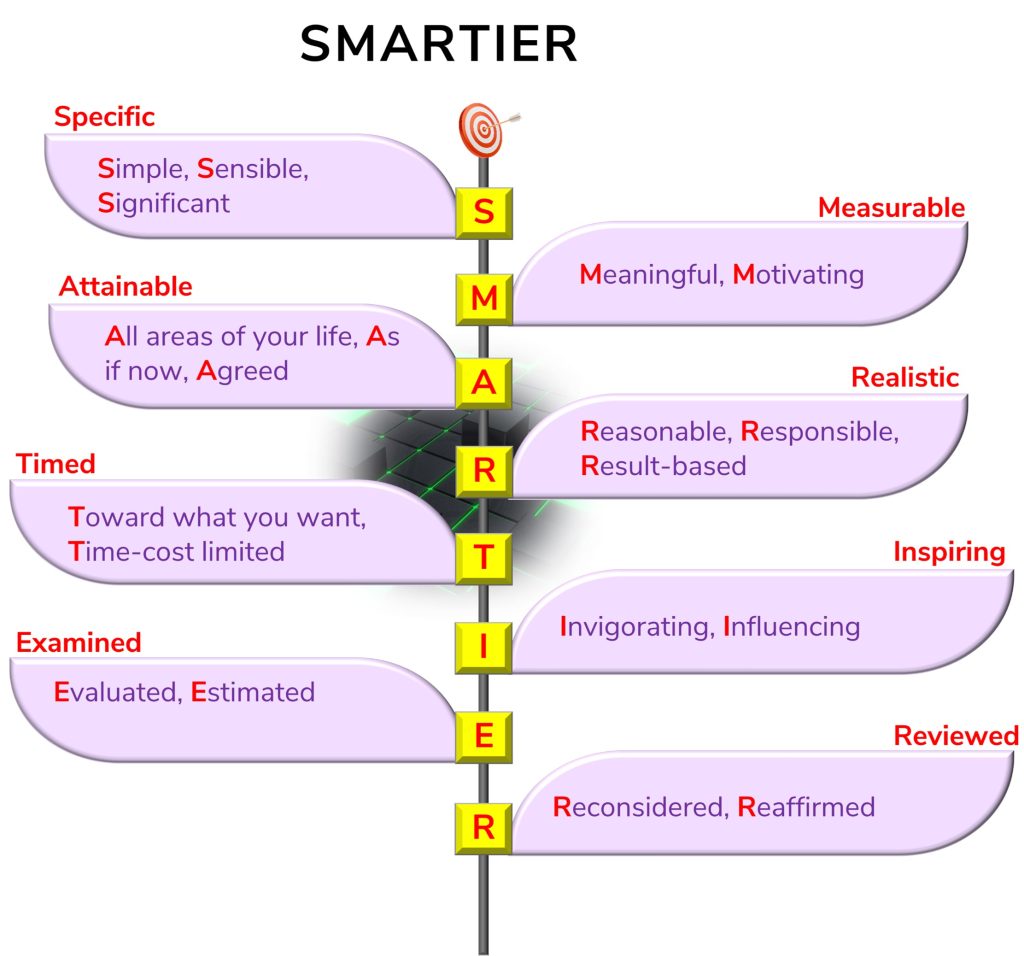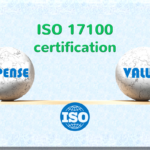
Unlock the secret to goal setting in the translation industry
Business Coaching
You’re probably familiar with goal-setting frameworks like SMART, OKRs, and KPIs, but you may have found that they don’t necessarily help you address the unique challenges of the LSPs. Or even dread to think that goal-setting is simply fantasizing.
But what if there was a better way? A way that takes into account the unique challenges of the translation industry? A way that goes beyond the traditional framework and also focuses on the mindset and soft skills that are essential to achieving your goals naturally and effortlessly?
Here’s a hint: It’s not about a particular framework. It’s about finding the mix of frameworks, mindset and soft skills that works powerfully for you and your team.
In this text, we share with you our insights and secrets of goal-setting based on our experience in the translation industry, using LSP examples. This is important because you will have a detailed road map for your company’s success. You will know naturally and easily what path to choose exactly to get to your desired destination safe and sound and on time.
Goal setting in five phases
Now let’s get down to work and go through concrete phases in detail. Based on Robert Dilts’ model of neurological levels, we have combined it with different approaches to obtain the five-step model of goal-setting suitable for the translation industry:
1. The power of visualization and the supportive environment
2. Actionable steps and behaviors
3. Unleash your potential – skills, competencies and knowledge
4. Overcome challenges – beliefs, values and roadblocks
5. Create your ideal future – mission, vision and identity
The power of visualization and the supportive environment
The first and most important step in reaching a goal is to have a clear idea of the moment you reach it. Just imagine a specific moment in the future. You can use the time and date when you are reading this text and imagine yourself five years from that moment in a place where you want to be.
● What do you see in that moment?
● What news have you heard?
● How do you feel about the goal achievement?
● Who is there with you?
● How are you celebrating your success?
Picture it in as much detail as you can. Pay attention to your facial expression, the excitement in your eyes, and the feeling of accomplishment that fills your body. This visualization exercise is important because it gives you a powerful motivational boost. It reminds you where you go every day when you wake up and why you are working so hard.
AI to the rescue
If your goal is just a number, like increasing sales by 10% or translating 100,000 words per month, that’s great. But it probably won’t inspire your team members as much as a vivid and understandable visualization. This is where AI tools like Craiyon come in. Craiyon helps you create a picture of your desired outcome, which you can then share with your team to get them excited and motivated.
The power of contrasts
Another way to increase your motivation is to imagine what will happen if you don’t reach your goal. For example, if you get an email from a client telling you that they didn’t accept your bid for a translation project of one million words.
● How will it look, how will it feel, and even what will you smell in that particular moment?
● Who will be disappointed in you?
● How will you feel about yourself?
Juxtaposing the two scenarios will help you realize where you really want to be and see the consequences of your non-action.
Now is the time to be specific about the context and measuring success.
Once you have a clear idea of your goal and the consequences of not achieving it, ask yourself the following questions:
● What are the benefits if we achieve this goal?
● By when do we need to have achieved this goal?
● Who are our collaborators and supporters?
● Where will we work on this goal?
● Who are our customers or clients?
● What external conditions will affect our ability to achieve this goal?
● What key performance indicators (KPIs) will we use to track our progress and ensure we are on track?
● What other goals are we trying to achieve at the same time?
Answering these questions will help you develop a concrete and actionable plan and how to measure your success. You know, what gets measured, gets done, right?
Actionable steps and behaviors
The second phase in achieving your goal is to determine the actions, steps, and phases. To do this, ask yourself the following questions:
● What are the most effective actions we can take to achieve our goal?
● What specific steps do we need to take to achieve our goals, and in what order?
● What are the phases and subphases of the specific goals you refer to?
● What specific criteria should we use to define milestones for this project?
● What are the specific behaviors and processes we use to collaborate and deliver quality work?
● How can we adapt our behavior to different situations?
● How can we align our internal and external communications to achieve our business goals?
Unleash your potential – skills, competencies and knowledge
Now that you have a clear plan of action, it’s time to assess your skills and resources. Do you have the knowledge, skills and abilities to execute your plan? Do you have the necessary tools and resources?
If you’re honest with yourself, you may find that you need to develop new skills or acquire additional resources. This is completely normal! Almost no one has all the skills and resources they need to achieve their goals at the moment they start working on the goal.
What’s important is that you have a plan for how you’re going to close the gap. You may need to take a class, hire a coach, or work with someone who has the skills and resources you need.
Once you have a plan to build your skills and get the resources you need, your goal will feel more achievable and measurable. The puzzle is starting to take shape.
Here are some specific questions you can ask yourself in this phase:
● What is our strategy to reach the goal?
● What tactical approaches should we consider?
● What technologies (tools, platforms, apps) do we have access to that can help us achieve our goals?
● Which internal and external people and teams can we rely on to achieve our goals?
● What workflows could we implement to improve our efficiency and effectiveness?
● What technical skills (hard skills) do we have and need to develop to achieve our goals?
● What interpersonal and communication skills (soft skills) do we have and need to develop to achieve our goals?
● What knowledge and experience do we have and must acquire to achieve our goals?
● How will we track and measure our progress in achieving our goals?
Overcome challenges – beliefs, values and roadblocks
The fourth step is to find the sources of your motivation, determination and perseverance. This will help you develop:
1) new habits
2) routines
3) and discipline
that will keep you going even when you’re distracted, disappointed or demotivated.
Ask yourself the following questions:
● What makes this goal significant for us?
● What positive results can we expect from achieving this goal?
● In what ways does our corporate culture encourage us to pursue this goal?
● How does pursuing this goal fit with the overall philosophy of our company?
● What drives us to achieve this goal?
● What challenges or obstacles do we face in pursuing this goal?
● Are there behaviors or patterns that prevent us from reaching our goal?
Create your ideal future – mission, vision and identity
The fifth phase is to examine your highest motives and determine the reason why you do what you do. Without this, it’s easy to get lost and lose motivation.
Here are a few questions to help you clarify your mission, vision and identity:
● How does this goal align with our company’s mission?
● How does achieving this goal help us achieve our vision?
● Why is this goal important?
● What kind of company do we want to be when we achieve our goal?
Taking the time to answer these questions will maintain your consistency as you move toward your goal.
Be SMARTIER to smartly achieve your goals
● What does SMARTIER mean? Set specific, measurable, achievable, relevant, time-bound goals, inspiring, evaluated and reviewed goals. This is our extended version of SMART goal-setting framework with its most important characteristics. Most importantly beware of the following common mistake we see with LSPs. They aren’t specific enough but often state something vaguely along the lines of increasing revenue significantly. What does that “increasing” exactly mean and by when should that be achieved? For example, instead of “increase revenue significantly,” say “increase revenue by 10% in the next quarter.”
● Use a goal-tracking system. This will help you stay on track and adjust your goals as needed. There are many different goal-tracking systems, such as Trakstar, PerformYard and the like, so find the one that works best for you and your team if you are a company that has more than 50 employees. If you are a small company with less than 50 employees, and these solutions seem to be too complicated for you, it is good to start with a simple MS Excel file with your goals to develop the goal-setting and tracking habit in the first place. And only later look for the software solution that suits your needs.
● Communicate your goals to your team clearly and specifically. Once you’ve set your goals, you should communicate them to your team as simply, clearly, and specifically as possible.Imagine you are presenting your goals to a 16-year-old child who must fully understand where to go and what to do without asking any additional questions. This way, you can make sure everyone is pulling together and working toward the same goals.
● Celebrate your successes. When you reach a milestone or the final goal, take the time to celebrate your success. Neuroscientists claim that this sends positive signals to your brain to release the oxytocin, dopamine, and endorphins which boost your mood, motivation, and attention. It also signals you to stay persistent, too.
But that’s not all.
The role of mindset in goal achievement
Our mindset plays a pivotal role in the goal-achievement process because it all starts in our minds. All airplanes and houses used to be a figment of someone’s imagination before they were built, weren’t they?
Below you’ll find some of the psychological aspects that are essential for goal achievement:
● Motivation: you must be motivated to achieve your goals. If you aren’t motivated, it’s unlikely that you’ll put in the necessary hard work and dedication.
● Discipline: Motivation is far from enough and vanishes quickly. You must be disciplined to keep going. This means you should eliminate distractions and focus on your goals. Focus, focus, focus! As Tony Robbins says, energy flows where attention goes.
● Perseverance: There will be setbacks along the way, because that’s just life, nothing is linear or black and white. But if you’re persistent and have an internal locus of control, you will efficiently deal with hardships.
● Team member commitment: If you have a team, their commitment is essential to achieving your goals. You learn more about how to address motivation in our blog Motivation of team members – the missing ingredient to achieving goals.
Achieving goals in the translation industry is far from easy because of the constant push to lower prices, free online AI-supported translation tools, and enormous competition. But it is possible. We hope this procedure will help you significantly increase your chances of success.
If you want to make sure that your goals are set properly and that their execution is unfolding as planned, we can help you in individual sessions. Book your free first appointment.











